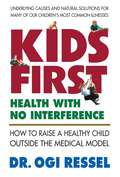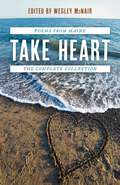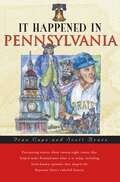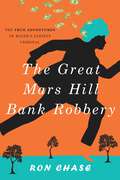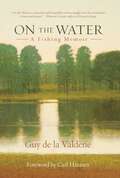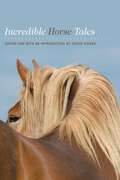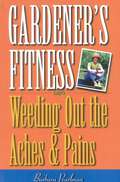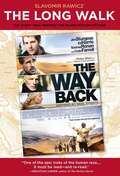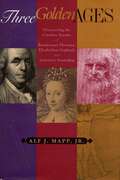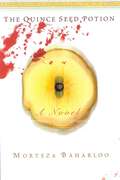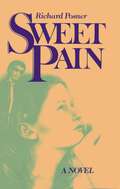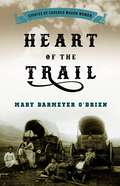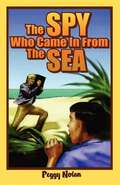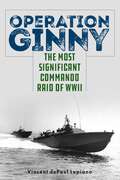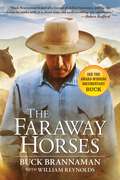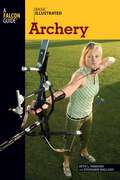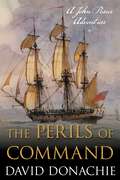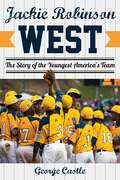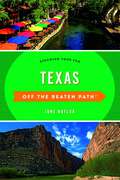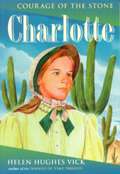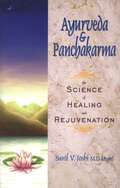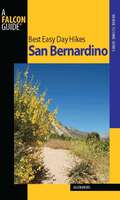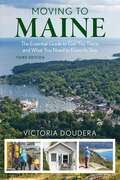- Table View
- List View
Kids First
by Ogi ResselDesigned for parents, teachers, health professionals, and all who share in the care of children, Kids First helps you determine the underlying causes of many children&’s illness and assists you in creating a healing program that will produce lasting results.Chiropractic healer Dr. Ogi Ressel first looks at the history of conventional medicine, including the current focus on medication. The remainder of the book explains and explores how you can maintain children&’s health without using drugs that actually interfere with an individual&’s innate potential for wholeness. The topics covered include nutrition during pregnancy, infantile colic, fever, ear infections, asthma, and much more. Commonsense remedies are offered, and important topics such as vaccination are discussed in depth. Finally, the author provides the information you need to choose a chiropractor who can restore and safeguard your family&’s well-being. If you have been looking for a more natural, more effective, and far safer way to care for children, Kids First: Health With No Interference will prove to be a valuable reference book as well as a lively bedside read.
Take Heart: Poems from Maine the Complete Collection
by Wesley McNairIn this anthology, former Maine Poet Laureate Wesley McNair has collected the work of Maine poets that were featured in his popular column, "Take Heart." Featuring a poem each week, the columns ran in thirty newspapers across the state and reached more than a quarter of a million readers. These are poems about longing and pleasure and death and love, poems about natural world, poems that will inspire tears and laughter and help you carry on--poems from the heart, all penned by Maine writers, whose astonishing vision this book celebrates.
It Happened in Pennsylvania (It Happened In Series)
by Fran Capo Scott BruceThis guide is a collection of thirty fascinating events that helped make Pennsylvania what it is today. From the witches of PA to the Expedition that changed the world, authors Fran Capo and Scott Bruce write with a comedic yet dramatic flair and an easy to read style that will entertain readers as they learn more about the colorful, and sometimes wacky history of Pennsylvania.
The Great Mars Hill Bank Robbery
by Ronald ChaseOn November 12, 1971, Bernard Patterson, a much decorated Vietnam War hero, turned a real-life version of Don Quixote, Butch Cassidy, and Robin Hood all rolled into one package, robbed the Northern National Bank in Mars Hill, Maine. He escaped with $110,000; at the time, the largest bank robbery in the history of the state. A tunnel rat and paratrooper in Vietnam who rose to the rank of Sergeant, he was awarded four bronze stars and recommended for a silver star for valor. He returned home to northern Maine broke and disillusioned. Wearing dark glasses, dressed in a Marx Brother&’s ankle length coat and wearing a blue wig, he robbed the bank, even though he was recognized by the elderly teller. He initially escaped by paddling a rubber raft down the Prestile Stream. This was the beginning of a comic, outrageous, implausible journey that took him across the United States, then to Europe and North Africa before finally surrendering to authorities in Scotland Yard after he had spent most of the money. Along the way, he lived a raucous life of wine and women while hobnobbing in aristocratic hangouts and giving money to those he perceived to be in need; all the time staying just a heartbeat ahead of law enforcement officials. He motor biked across Europe, hoodwinked border officials, bought a camel and got lost in the North African desert. Returned to the United States for prosecution, he was convicted and imprisoned. Released several years later, he moved back to northern Maine, where he continued to lead a reckless life that included running a &“pot farm,&” until he died at age 56 in 2003. When asked by a friend why he had robbed the bank, he responded, &“the VA wouldn&’t give me a loan, so I decided to take one out on my own.&”
On the Water: A Fishing Memoir
by Guy de la ValdèneFrom the acclaimed author of Fragrance of Grass comes a meditation on water and nature, fishing and growing older. On the Water is a gorgeously written collection of essays that all take place on or near the water and pay tribute to the flora and fauna associated with those ecosystems. There are essays about the finer points of tickling rainbow trout in the streams of Normandy, and of eagles and ospreys fishing for bass while barely breaking the surface of the water. There are stories of droughts and floods, of dogs and boats, of worms and rattlesnakes and even of catching and cooking soft-shell turtles that taste like osso-bucco. There is fishing and diving in the Bahamas, tarpon fishing in the Florida Keys, and fly fishing for sailfish in Central America. And there are larger-than-life personalities that are bigger than the fish tales they tell! On the Water is a finely honed and well crafted collection of tales for the true sportsman and makes for a perfect companion volume to la Valdene&’s celebrated collection of essays on hunting.
Incredible Horse Tales (Incredible Tales)
Horses have been at the right hand of man for thousands of years. They have helped build empires and helped bring them down. Horses have carried the doctor swiftly to the door of a dying mother and galloped across the vast distances of the American West, bringing news to the settlers. Horses today are our companions in sport, dashing to the finish line or leaping impossibly high fences for the sheer glory of the win. Horses also lurk in the mists of myth and legend. Here are the most exciting horse stories compiled from human history, both fact and fiction.
Gardener's Fitness: Weeding Out the Aches and Pains
by Barbara PearlmanA practical, easy-to-follow manual, Gardener's Fitness includes conditioning exercises, postural guidance for moving correctly and safely, therapeutic stretches to relieve discomfort, and a variety of gentle exercises designed to relax tired muscles and restore energy after laboring in the garden.
Long Walk: M/TV
by Slavomir RawiczMORE THAN HALF A MILLION COPIES SOLD! The classic adventure story that inspired the new major motion picture The Way Back, directed by Peter Weir *** &“I hope The Long Walk will remain as a memorial to all those who live and die for freedom, and for all those who for many reasons could not speak for themselves.&”—Slavomir Rawicz"The Long Walk is a book that I absolutely could not put down and one that I will never forget..."--Stephen Ambrose "A poet with steel in his soul."--New York Times"One of the most amazing, heroic stories of this or any other time."--Chicago Tribune&“A book filled with the spirit of human dignity and the courage of men seeking freedom.&”—Los Angeles Times&“Heroism is not the domain of the powerful; it is the domain of people whose only other alternative is to give up and die…. [The Long Walk] must be read—and reread, and passed along to friends.&”—National Geographic Adventure&“The ultimate human endurance story…told with clarity, vivid description, and a good dash of romance and humor.&”—The Vancouver Sun"Essentially it comes down to some sort of inner tenacity and that is what is so gripping about the book because you know that this is actually about all of us. It's not just some Polish bloke who wanted to get home. It's about how we all struggle on every day. Somehow or other we find a reason to keep on going and it's the same here but on an epic scale".--Benedict Allen, explorer and bestselling author of Into the Abyss and Edge of Blue Heaven *** In 1941, the author and six fellow prisoners of war escaped a Soviet labor camp in Yakutsk—a camp where enduring hunger, cold, untended wounds, and untreated illnesses, and avoiding daily executions were everyday feats. Their march—over thousands of miles by foot—out of Siberia, through China, the Gobi Desert, Tibet, and over the Himalayas to British India is a remarkable statement about man&’s desire to be free. Written in a hauntingly detailed, no-holds-barred way, the book inspired the Peter Wier film The Way Back, due for release in late 2010. Previous editions have sold hundreds of thousands of copies; this edition includes an afterword written by the author shortly before his death, as well as the author's introduction to the book's Polish edition. Guaranteed to forever stay in the reader's mind, The Long Walk will remain a testament to the strength of the human spirit, and the universal desire for freedom and dignity. *** Six-time Academy Award–nominee Peter Weir (Master and Commander, The Truman Show, and The Dead Poets Society) recently directed The Way Back, a much-anticipated film based on The Long Walk. Starring Colin Farrell, Jim Sturgess, and Ed Harris, it is due for release in late 2010.
Three Golden Ages: Discovering the Creative Secrets of Renaissance Florence, Elizabethan England, and America's Founding
by Alf J. MappIn this intriguing book, best-selling author Alf Mapp, Jr. explores three periods in Western history that exploded with creativity: Elizabethan England, Renaissance Florence, and America's founding. What enabled these societies to make staggering jumps in scientific knowledge, develop new political structures, or create timeless works of art?
The Quince Seed Potion: A Novel
by Morteza BaharlooThis novel is set against the backdrop of Iran's turbulent modern history, is a saga of an indentured servant's devotion and love for his masters during the years 1928 to 1981.
Sweet Pain
by Richard PosnerCasey Gordon is lean and limber, a 17-year-old senior at Westfield High School. Casey is a bright, energetic, caring girl but she seems to need to be hurt. She injures herself a little too much in track competitions and she always falls in love with real losers. She doesn&’t really understand the conflicts inside of her and the feelings of unworthiness that set her up to get involved with Paul VanHorn.Paul is nineteen, and he graduated—under a cloud of scandal—from her high school the year before. Instead of going to college, he does construction work. A mysterious, attractive boy just over six feet and powerfully built, he is well-read, intelligent, and even romantic. He charms Casey and he pays attention to her deepest needs. But he comes from a terrible home—his father is an abusive alcoholic and his mother a submissive, suffering victim.
Heart of the Trail: Stories of Covered Wagon Women
by Mary Barmeyer O'BrienUpdated and expanded for its twentieth anniversary—the beloved book that tells the stories of the women who traveled West. In Heart of the Trail Mary Barmeyer O'Brien beautifully captures the triumphs and tribulations of women who crossed the American frontier by wagon during the great Western migration of the mid nineteenth century. While their stories are widely different, each of these remarkable women was inspiring, courageous, and resourceful. From the successes of mountaineer Julia Anna Archibald to the grueling trials of Mary Powers, these stories reflect the adventure and hardship experienced by the thousands of women who took to the trails. The legacy of their letters and diaries, most written on the trail, is a fascinating addition to understanding the history of the West.Mary Barmeyer O'Brien&’s books on the pioneer experience include The Promise of the West; Jeannette Rankin: Bright Star in the Big Sky; Outlasting the Trail: The Story of a Woman's Journey West; May: The Hard-Rock Life of Pioneer May Arkwright Hutton; and Across Death Valley. She lives in Polson, Montana.
Spy Who Came in from the Sea (Florida Historical Fiction for Youth)
by Peggy NolanFourteen-year old Frank Hollahan moves to Florida in 1943, at the height of World War II, to join his father, a navy seaman. When Frank and his mother arrive at the busy naval port of Jacksonville, a surprising new life awaits them. In this new place, Frank's life changes in ways he never imagined. In his new school, his tendency toward exaggeration quickly builds him a reputation as a teller of tales. He wanders to the beach one night and sees what seems to be a man coming ashore from a submarine. When he informs his family, friends, and teachers that he saw a spy from a German U-boat land on the local beach, no one believes him. Is the spy real, or is he only a part of Frank's imagination and exaggeration? Frank is certain the spy has plans for sabotage. With the aid of Rosemarie Twekenberry, who has eyes only for Frank, and a mysterious beach recluse known as Weird Wanda, Frank sets out to prove the spy's existence. With time running out, Frank must figure out a way to stop him. Each rumor and discovery—whether a buried chest, a secret code, or a mysterious note—presents new problems. The truth finally comes to light at the big bond rally in the shipyard as Frank's class presents a rousing patriotic program, led by Mr. Jolly, an ex-clown turned teacher. Thrown into the mix are a brash, redheaded student named Howard; Gladys, the organizer; and other zany characters who all join in the tangled web of this wartime mystery, based on an actual occurrence. The spy who came in from the sea ends up teaching Frank—and the people of Jacksonville—valuable lessons about friendship, perseverance, and the power of the truth.Next in series > >See all of the books in this series
Operation Ginny: The Most Significant Commando Raid of WWII
by Vincent dePaul LupianoOperation Ginny is the story of the two Operation Ginnys. Both military assaults by the Allied forces were unsuccessful, although the first was successfully recalled. The second operation launched one month later, March 22, 1943, and ended up in the murder of all 15 American participants by the Nazis. It became one of the most notable and historic raids of WWII, providing much legal precedent and criteria for the Nuremberg Trials that began in September 1946. While not a military success, Operation Ginny was unlike any other commando operation during WWII and would have consequences and effects on the conduct and illegalities of war and military criminal justice. And thereby hangs a tale….
Faraway Horses: The Adventures and Wisdom of One of America's Most Renowned Horsemen
by Buck Brannaman"I've started horses since I was 12 years old and have been bit, kicked, bucked off and run over. I've tried every physical means to contain my horse in an effort to keep from getting myself killed. I started to realize that things would come much easier for me once I learned why a horse does what he does. This method works well for me because of the kinship that develops between horse and rider. " --Buck BrannamanIn THE FARAWAY HORSES, Brannaman shares his methods for training and provides a behind-the-scenes glimpse of Robert Redford's movie The Horse Whisperer, for which he was the technical advisor. *Authoratative figure in horsemanship*Reveals the key to understanding animalsBUCK BRANNAMAN is a horse gentler--not a horse "breaker"--who has started more than 10,000 young horses in his clinics. He lives with his family in Sheridan, Wyoming. WILLIAM REYNOLDS is the associate publisher of Cowboys & Indians magazine. He lives with his family in Santa Ynez, California.
Basic Illustrated Archery (Basic Illustrated Series)
by Lon Levin Beth Habeishi Stephanie MalloryBASIC ILLUSTRATED GUIDESA new series of full-color how-to guides, the BASIC ILLUSTRATED guides are written by experts and aimed for beginners, but even veterans will use these books as basic reference tools. Each book contains comprehensive information for a specific activity, has an affordable price and a portable format, and includes full-color photographs throughout. A great impulse item as well as a gift for all ages and all occasions.BASIC ILLUSTRATED ARCHERYBeth Habeishi and Stephanie Mallory show how to select equipment, safely shoot and retrieve arrows, fine-tune accuracy, increase strength, and enter competitions.
Perils of Command: A John Pearce Adventure (John Pearce)
by David DonachieJohn Pearce, having negotiated the highly questionable sale of the two French prizes taken in The Devil to Pay, has left HMS Flirt, as well as the crew and the wounded Henry Digby, in Brindisi and is now headed for Naples to see his lover. In an uncomfortable journey he seeks to work out a way to best both Admiral Sir William Hotham and Captain Ralph Barclay, men who are his sworn enemies. All his calculations are thrown into turmoil when he discovers that Emily is pregnant which, while it is a cause for joy, is also a reason to worry; she is still married to Ralph Barclay and by the laws of the time he can claim the child as his own.
Jackie Robinson West: The Triumph and Tragedy of America's Favorite Little League Team
by George CastleThe competition level in Little League has never been tougher, but the kids on the Jackie Robinson West team faced their own set of challenges on and off the baseball diamond. The Jackie Robinson West team takes their fans and followers on a rollercoaster ride of ups and downs as each player shares a different part of the team&’s history and experience, including a double-header with President Obama. Jackie Robinson West: The Story of the Youngest America&’s Team leads readers on their harrowing path to the Little League World Series.
Texas Off the Beaten Path®: Discover Your Fun (Off the Beaten Path Series)
by June NaylorTired of the same old tourist traps? Whether you&’re a visitor or a local looking for something different, Texas Off the Beaten Path shows you the Lone Start State with new perspectives on timeless destinations and introduces you to those you never knew existed—from the best in local dining to quirky cultural tidbits, hidden attractions, unique finds and unusual locales. So if you&’ve &“been there, done that&” one too many times, get off the main road and venture Off the Beaten Path.
Charlotte
by Helen Hughes VickThe exciting second novel in the Courage of the Stone series takes place in 1868 as Charlotte and her family leave Massachusetts for the Arizona Territory. Ages 9-12.
Ayurveda and Panchakarma: The Science of Healing and Rejuvenation
by JoshiOffers the deepest insights into the principles of Ayurveda, as well as the most complete explanation of the theory and practice of Panchakarma.
Our Favorite Chicken Recipes Cookbook
by Gooseberry PatchSame great recipes...brand new cover!Our Favorite Chicken Recipes cookbook is filled with recipes for the tastiest chicken dishes like southern fried chicken & fritters and slow-cooker chicken stew. The handy purse-perfect size is great to take along to the grocery. Durable softcover cookbook, 128 pages..
Homeopathic Cell Salt Remedies
by Nigey Lennon Lionel Rolfe*** OVER 35,000 COPIES SOLD ***In the1870s, Dr. Wilhelm Schuessler revolutionized German homeopathic medicine. Ahomeopathic physician, Dr. Schuessler believed that the approximately 2,000remedies of his day could be simplified. After the doctor determined thateffective ingredients in the remedies were their mineral constituents, heisolated these components and developed twelve individual remedies—the Schuesslercell salts—that are essential to maintaining health.Homeopathic Cell Salt Remedies is a simple yet comprehensive guide to the history,theory, and use of cell salts. Part One provides a history of Dr. Schuessler&’sdiscovery, a brief overview of each cell salt, and comprehensive instructionsfor using the remedies. Part Two features a Simplified Remedy Guide offering anA-to-Z listing of common disorders and their remedies. This is followed by adetailed discussion of each of the cell salts. Rounding out the book are achapter on using cell salts for youth and beauty, a glossary of terms, and aresource list of firms that sell the remedies.At a time when millions are rediscovering the many benefits of homeopathicmedicine, Homeopathic Cell Salt Remedies provides a valuable introductionto the safe and effective use of cell salts.
Best Easy Day Hikes San Bernardino (Best Easy Day Hikes Series)
by Allen RiedelThis book features twenty hikes in and around San Bernardino, California.
Moving to Maine: The Essential Guide to Get You There and What You Need to Know to Stay
by Victoria DouderaThis is a completely revised and expanded edition of the best-selling, comprehensive guide covering not only reasons to move to Maine but also what newcomers will find once they get here. The book answers questions about what Maine is really like as a place to live, providing a broad range of information about schools, housing, cultural life, taxes, work and employment opportunities, and even the weather.
